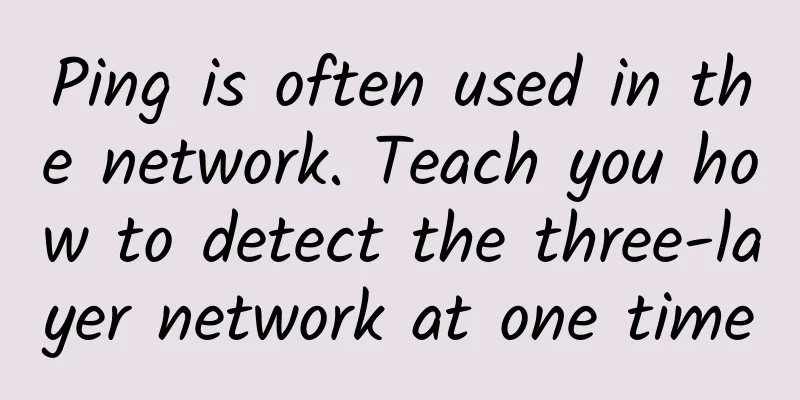Ping is often used in the network. Teach you how to detect the three-layer network at one time

|
Internet Control Message Protocol: ICMP is a control plane protocol The IPv4 protocol is a connectionless protocol, and ICMP assists IPv4 and is used to detect the connectivity of the three-layer network, provide error prompts, and perform path optimization (redirection). Message encapsulation: Ethernet2/IPv4/ICMP/FCS (IP protocol number 1) Note: Type: Type Code: Code checksum: ICMP message checksum. ICMP message type and code type (Code); destination unreachable message, source suppression message, timeout message, parameter problem, change route, echo request and reply, timestamp request and reply, address mask request and reply, route query and notification; some are as follows: Ping command: Echo Request Echo Reply Echo reply: Traceroute command: route tracking Packet encapsulation: Ethernet 2/IPv4/UDP/Traceroute/FCS UDP port number 33434 Principle: The Traceroute command uses the TTL field and ICMP error messages to determine the route from one host to other hosts on the network. First, Traceroute sends an IP data packet with a TTL of 1 to the destination. When the first router on the path receives this data packet, the packet rewriting engine reduces the TTL by 1. At this time, the TTL becomes 0, so the router will discard this data packet and send back an "ICMP time exceeded" message (including the source address of the IP packet, all the contents of the IP packet and the IP address of the router). After receiving this message, Traceroute knows that this router exists on this path. Then Traceroute sends another data packet with a TTL of 2 and finds the second router... Traceroute increases the TTL of the sent data packet by 1 each time to find another router. This repeated action continues until a data packet reaches the destination. When the data packet reaches the destination, the host will not send back an ICMP time exceeded message. Once it reaches the destination, since Traceroute sends data packets to the uncommon port number 33434 via UDP data packets, it will receive an "ICMP port unreachable" message, so it can be determined that the destination has been reached. Note: Traceroute 1.1.1.1 source 2.2.2.2 specifies the source address and destination address of Traceroute. The source address of Cisco source Traceroute must be the interface address of the router to prevent DDOS attacks. |
>>: Network Address Translation Protocol (NAT) and Its Application Examples
Recommend
How much do you know about the development of Wi-Fi?
As someone who uses Wi-Fi every day, have you eve...
Interviewer asked: Tell me about the principle of IP address allocation
1. Introduction to network model In computer netw...
The next generation of live broadcast solution is here, this is how e-commerce live broadcasts should be played in the future!
On August 6, Huawei's online seminar (Huawei ...
A brief discussion on the application of Category 6 cabling system in smart buildings
With the continuous extension of network technolo...
CloudSilk: San Jose triple-network AS4837 line, 2.5Gbps bandwidth, annual payment starting at 160 yuan
CloudSilk.io is a Chinese hosting company founded...
Is the neighbor Wang using the internet for free? This is how you should punish him on the spot
Have you ever found yourself always experiencing ...
Say hello politely - TCP protocol three-way handshake
The Art of Communication What is the most basic a...
"2021 Application Strategy Status" released, F5 continues to build aware, controllable, and on-demand applications
[51CTO.com original article] In the past year, af...
Top 10 5G Industry Practice Benchmarks in 2022
In 2022, 5G construction has made breakthrough pr...
The future of blockchain
The rise of the digital currency market represent...
Is quantum internet coming? High fidelity and long distance are its characteristics
The future quantum internet will be faster and mo...
HostYun: 25 yuan/month KVM-1GB/10G SSD/500GB (including CN2)/Korea VPS
Let's take a look at HostYun's informatio...
How to calculate and reduce fiber losses in your network?
Fiber optic networks have become popular over the...
These 8 IT infrastructure terms IT practitioners should know
IT infrastructure is changing rapidly. Specifical...
Ethernet Adapter Market to See Record Revenue Growth in 2022
According to a recent report released by DellOro ...









